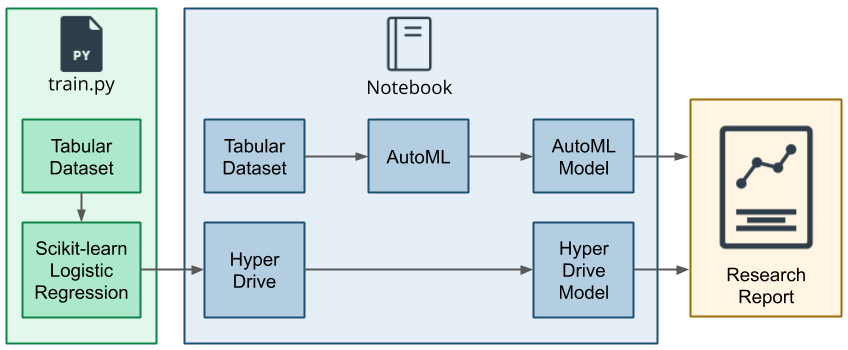This project is part of the Udacity Azure ML Nanodegree. In this project, we build and optimize an Azure ML pipeline using the Python SDK and a provided Scikit-learn model. This model is then compared to an Azure AutoML run.
The data is related to direct marketing campaigns (phone calls) of a Portuguese banking institution. The classification goal is to predict if the client will subscribe a term deposit (variable y).
The best performing model was a VotingEnsemble which achieves a performance of 91.6 % accuracy compare to the Logistic Regression model with the best parameters who only achieves a 90.6 % performance accuracy.
We downloaded the data from a web link, clean it and one hot encoded some key features , split in train and test with 25% of the data in testing, And then we train the data using Hyperdrive with random sampling. We only focus our hyperparameters fine-tuning on two key parameters of Logistic Regression : * C : Inverse of regularization strength; must be a positive float. * max_iter : Maximum number of iterations taken for the solvers to converge.
We used Random sampling search because it should be faster, allow more coverage of the search space and parameter values are chosen from a set of discrete values or a distribution over a continuous range.
We used a Bandit Policy early termination, because it automatically terminates poorly performing runs with an early termination policy and terminates runs where the primary metric is not within the specified slack factor/slack amount compared to the best performing run.Early termination improves computational efficiency.
We downloaded the data from a web link, clean it and one hot encoded some key features , split in train and test with 25% of the data in testing. Then we created a dataset that we passed to Azure Auto ML.
Auto ML found the best performing model , a VotingEnsemble which achieves a performance of 91.6 % accuracy compare to the Logistic Regression model with the best parameters who only achieve a 90.6 % performance accuracy.
This was predictable because the Auto ML search a larger set of ensemble models as the first approach only evaluate hyperparameters of the baseline Logistic Regression model.
Next steps would be to investigate the Voting Ensemble and Hyperparameters to see how we could improve performace. Also the classes were imbalanced, we could also look at the impact of oversampling or under-sampling the data on performance in conjunction with other feature engineering techniques.
